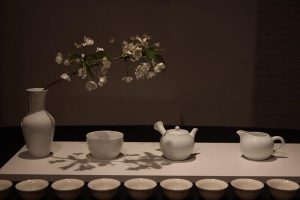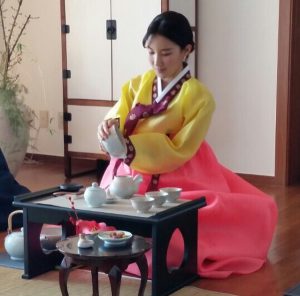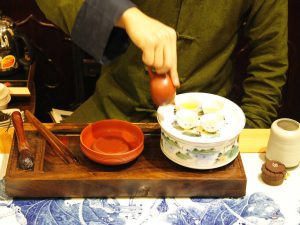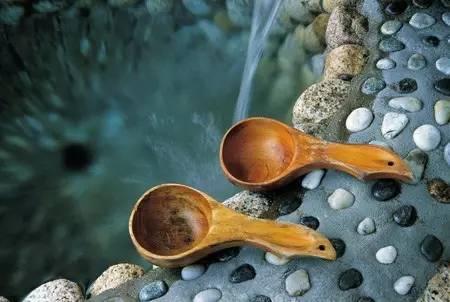

Korean Senchadao
When practice the Ogasawara Japanese Senchadao today have further enlightened by some tiny details that are either similar or different with the traditional Chinese Caozhou Gongfu Cha, except :
- Wash hand and mouth before entering the tea room, this pre-phase process is practiced in both Japanese and Korean tea ceremony. While the environment and setting preparation in many Chinese tea ceremony are the responsibilities of the tea person. To correct the casual behaviors from guests, then it is important for us to invite guests to the practice the moment of Zen in the first phase of preparation.
- In Japanese, they write Senchadao as 煎茶道 in Chinese characters, but the brewing methods actually is following the soft steeping methods while the traditional Chinese Senchadao we follow the meaning in the Chinese characters 煎 (boiling) and 茶 (Cha, tea) that actually is tea boiling method. That’s why based on the Chinese characters, at the beginning it can cause some misunderstanding
- Water temperature is extremely important, adjust water temperature according to the type of tea you choose.
- With the lower temperature, i.e. +/- 50°C allow the dissolvent the sweet taste of Amino Acid
- With the warm water temperature about 80°C, it allows the dissolvent the astringent taste of Catechins
- With the higher water temperature about 100°C, then it abstract the aroma and flavor out more
-

Chinese traditional Caozhou Gongfu Cha
With the Japanese Senchadao, the smaller size tea pot, the lower water temperature; while the Chinese traditional Senchadao has no problem with that because the grinded tea are boiled in water, and we maintain the same high temperature in the Caozhou Gonfu Cha because we use different type of tea that requires high temperature from the water
- With Japanese Senchadao they keep the steeping time short, max. 60 seconds, even with the low temperature of water. The taste of tea is also very pure and strong with the Japanese Senchadao because traditionally they use 6g for 3 people (the problem is not big if you use good quality, but lower quality might quickly develop bitter taste; while in Chinese traditional Caozhou Gonfu Cha we use 5-7g of tea and steeping time is even shorter because the difference in tea characters.
- Serving cup in Japanese Senchadao is not used for tea serving, no serving cup used in the Chinese Caozhou Gonfu Cha.
- With Japanese Senchadao, they only serve tea twice, while in Chinese tea ceremony, minimum 3 servings and of course sometimes we simply continue till 6 or more infusions. That’s why Chinese tea ceremony meets better with the living philosophy of “Economic” and “Thrifty”.
- With the Japanese Senchadao it is important for all participants to go through the entire procedure, meaning participants have to be patient till the whole process is complete and then can excuse after showing respect to the tea master while often in Chinese tea ceremony people simply put down the cup and leave. This is the part that Chinese could and should re-learn from Japanese.


Leave a Reply
You must be logged in to post a comment.